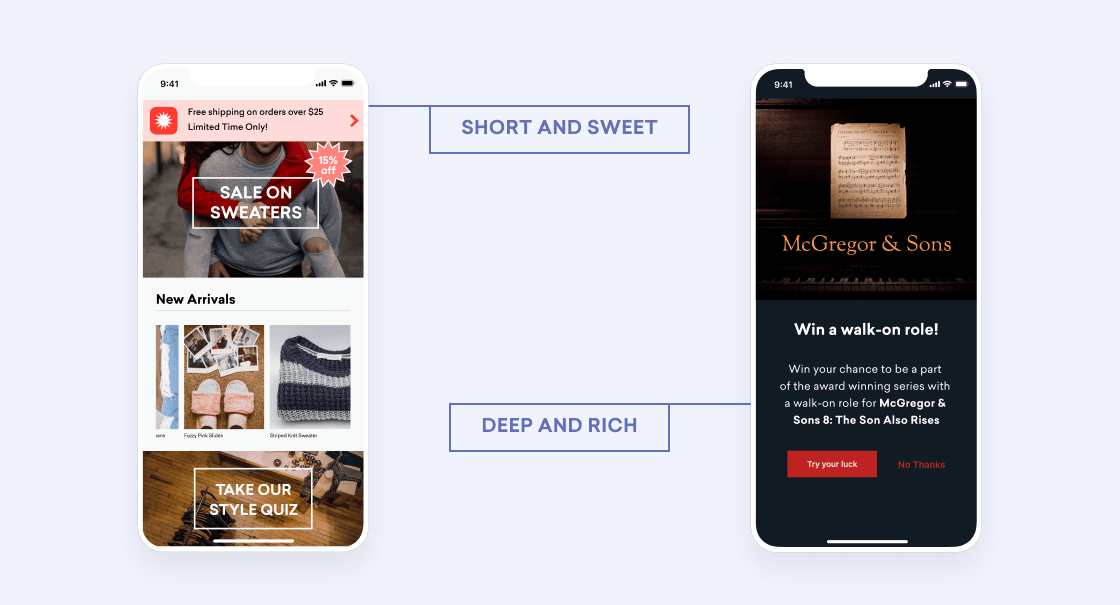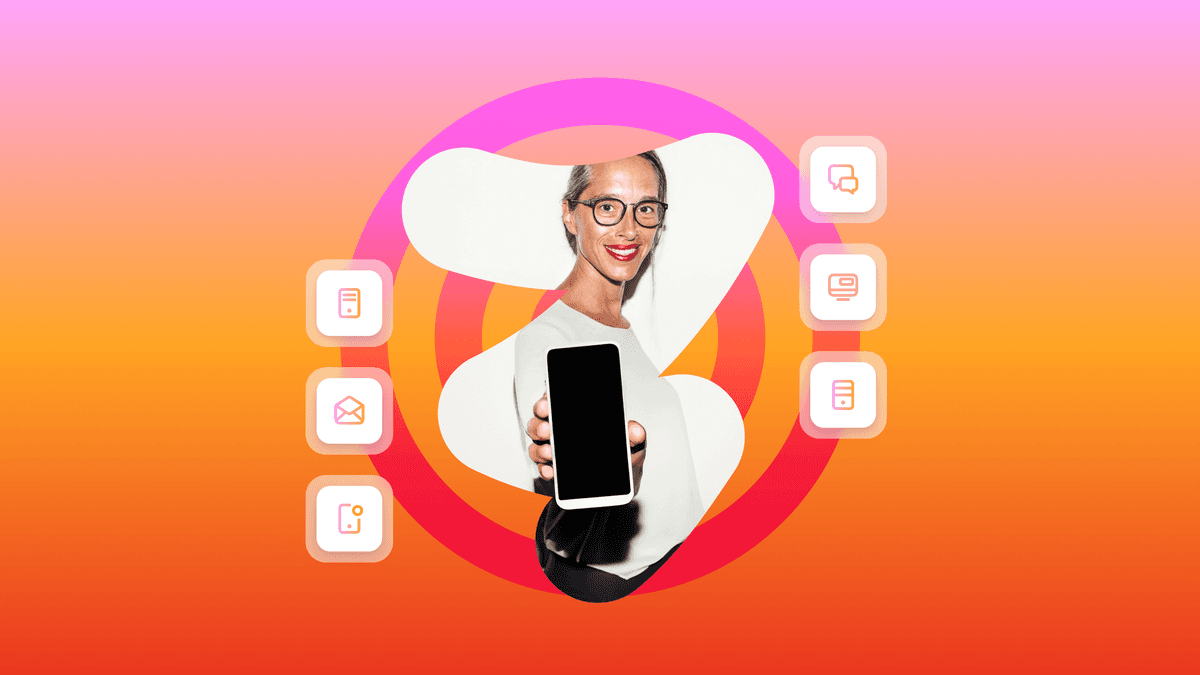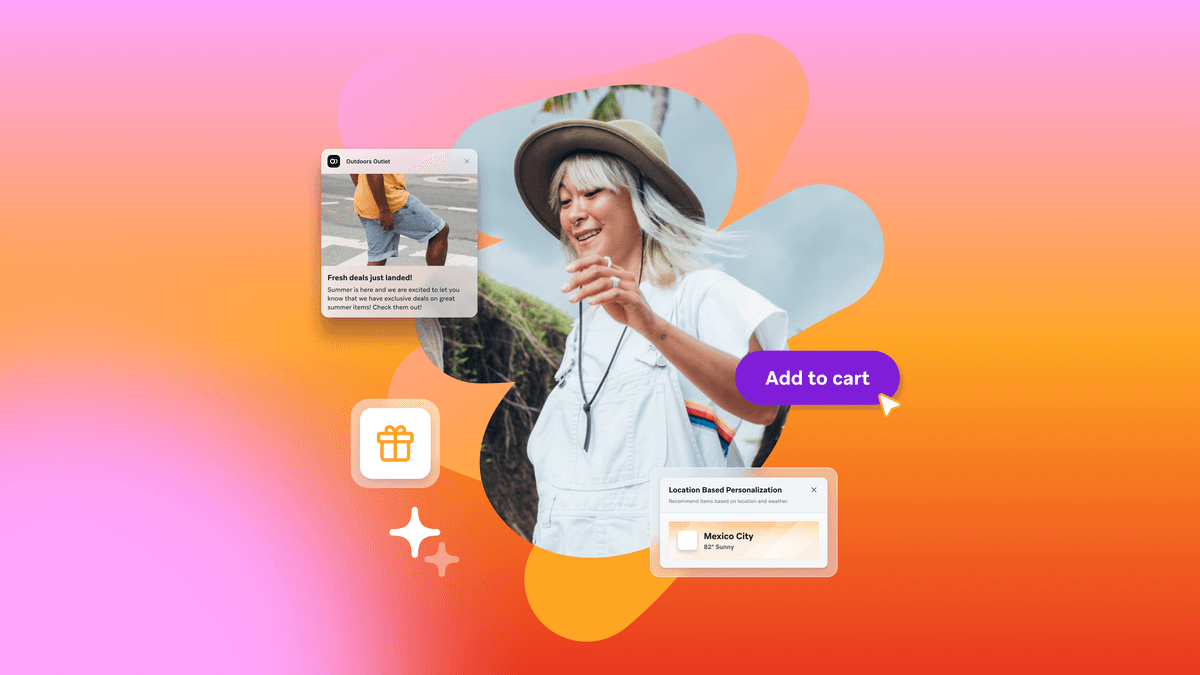In-App Messages: 3 Key Benefits of This Underappreciated Messaging Channel
Published on May 11, 2020/Last edited on May 11, 2020/4 min read


Todd Grennan
Content Production Principal, Content Marketing at BrazeWhen you’re looking to communicate with your customers, there are a number of different messaging channels open to you, each with its own traits. You definitely know your way around email before and have sent many a push notification, too. But what about in-app messages?
An in-app message (IAM) is a message delivered exclusively to people currently engaging with your app or website. While this channel can be underused, there’s a lot of potential here as IAMs can play an important role in supporting increased conversions, revenue, and customer engagement.
How? Let’s take a look at three benefits of using in-app messages that can give your marketing a boost:
1. IAMs Let You Reach More of Your Customer Base
Imagine your brand is launching a major campaign around a holiday sale. You want your customers to know that the sale is happening, so you use email and push notifications to promote it.

When you send those emails and push notifications, you’ll reach customers–but only the customers who have given you permission to contact them using those channels. That’s not a bad start, but an IAM can help you reach an even bigger proportion of your audience and at a time they are likely to engage as they’re already in your app.
2. IAMs Let You Reach Customers at Their Most Engaged
The customers you reach with IAM aren’t people you need to convince to visit your app or website: They’re already there! Some are new customers interested in learning more about your brand. Some are die hard fans who come back again and again. A lot fall somewhere in between. But the important thing is that all of them are already primed to hear from you.

Whatever you’re trying to accomplish with your messaging, whether it’s boost sales, get some positive app store reviews, encourage sharing on social media, active users are likely to be your most receptive audience. By sending an IAM, you aren’t interrupting. You’re deepening their interaction with your brand by building on something they’re already doing.
3. IAMs Make it Easy to Customize Your Outreach’s Look and Feel
Imagine one of your customers has just downloaded your app. They open it and a page pops up that welcomes them with a quick overview of your app’s features and how to make the most of them. The onboarding process could be a permanent part of the app, built by your developers. But that experience could also be provided using IAMs created by you.
In-app messages are versatile and can mirror the look and feel of your app or website. That means that marketers can easily send in-app messages that feel like an organic part of their brand’s app or web experience without help from their engineering team.
You can craft short and sweet ones that look and feel like push notifications, alerting active customers to urgent or time-sensitive information. On the other hand, IAMs can mimic the richness of email, providing customers with an immersive experience that’s well-suited for conveying more complex information or giving context to a call-to-action. They can be about as long or short and as simple or rich as you need them to be.

That’s particularly helpful if you’re trying to strengthen active customer’s engagement with your brand. In-app messages let you nudge people to try out new features, check out content they’ve missed or visit sections of your digital presence that they’ve been neglecting.
Now What?
By embracing in-app messaging you can diversify your outreach, making your marketing more balanced and effective. You’ll reach people you’re missing right now and build stronger relationships with your most active customers. Sounds good, right?
So why wait? If you’re already sending emails and push notifications, focusing on IAMs can boost overall engagement rates. To see how, check out our Cross-Channel Messaging Guide.
Related Tags
Be Absolutely Engaging.™
Sign up for regular updates from Braze.
Related Content
View the Blog
The future of payments: Enhancing innovation and trust in a changing landscape

Erin Bankaitis

Multichannel optimization: Unlocking a more cohesive strategy for engaging customers

Team Braze

Customer engagement must-haves for peak shopping season
